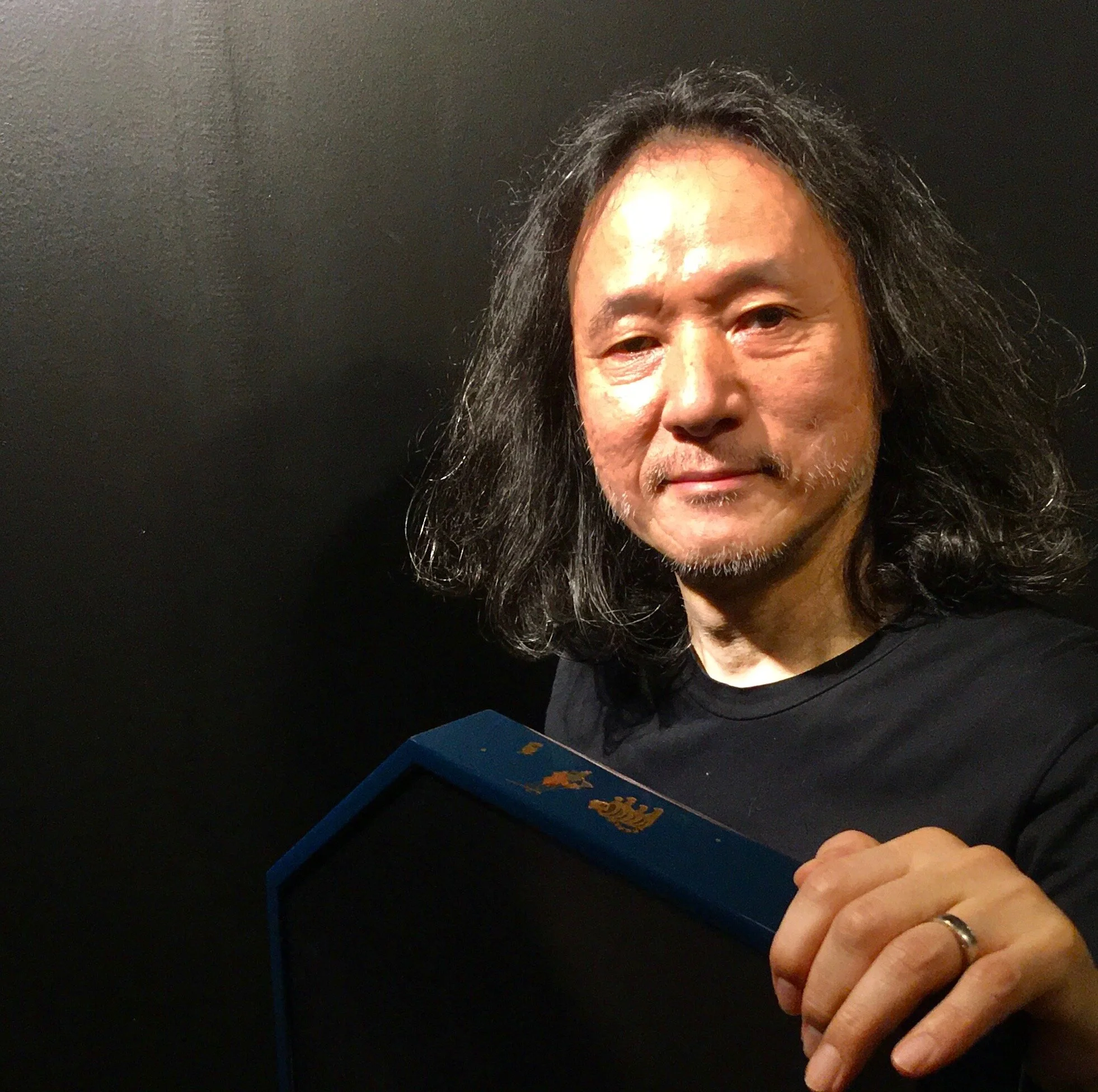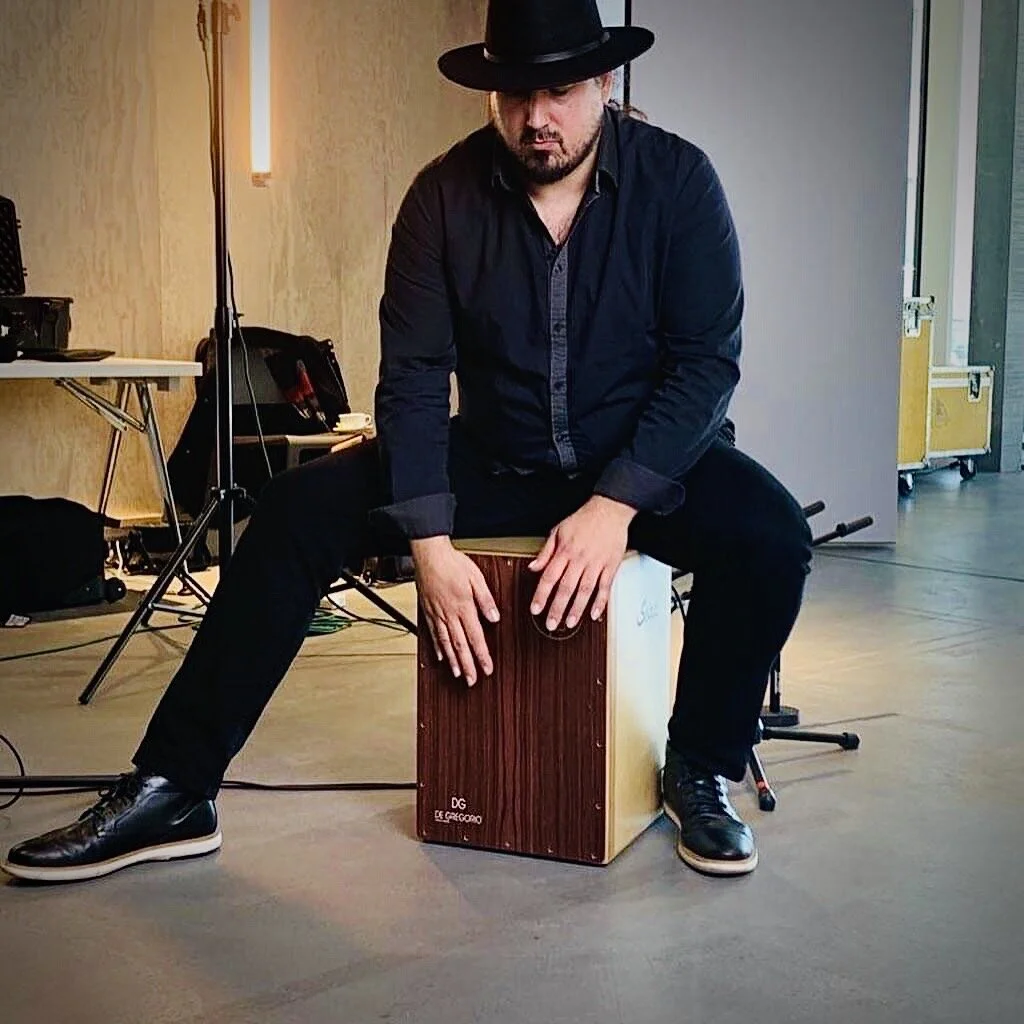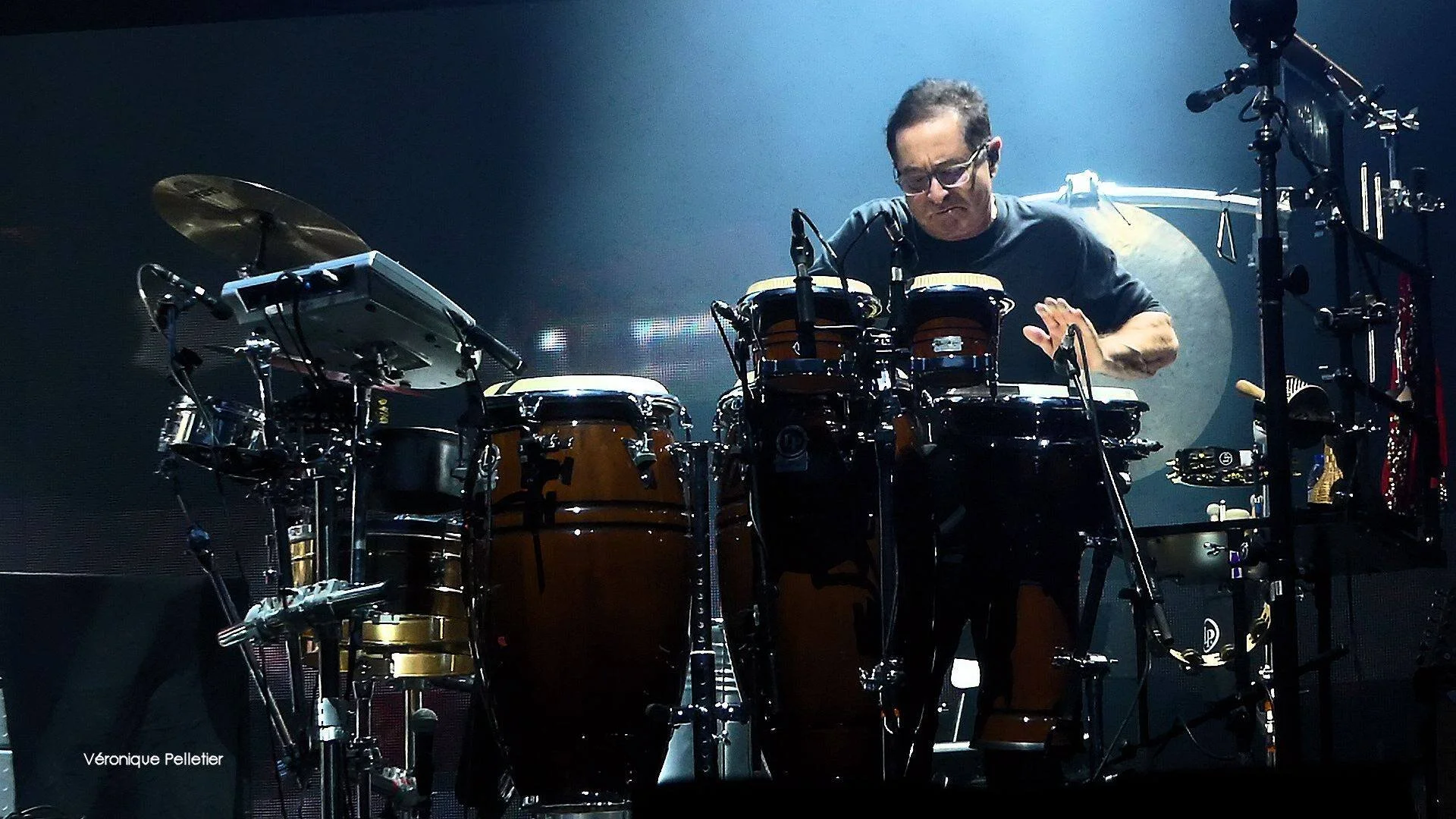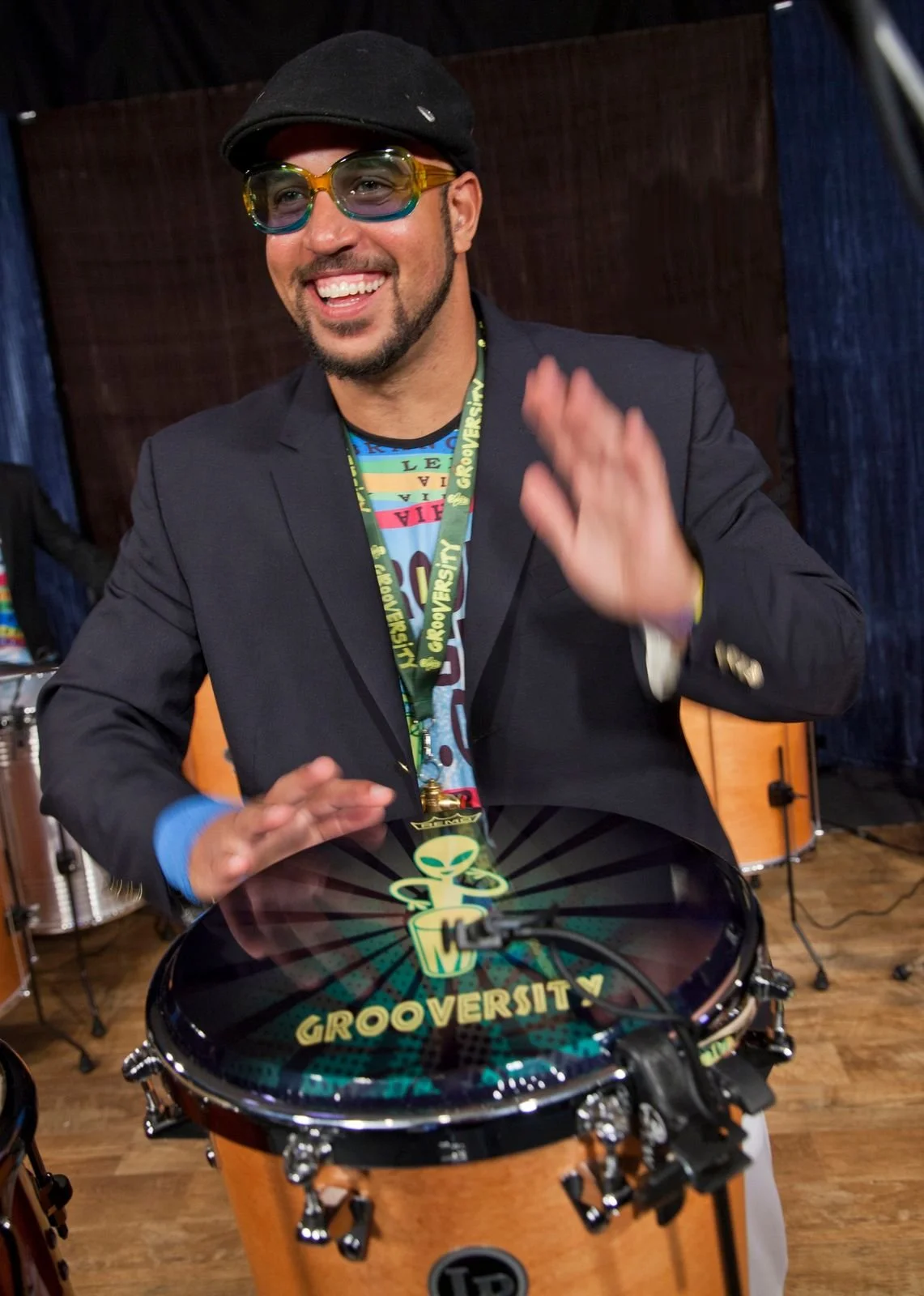#187 Ikuo Kakehashi- Percussionist, Inventor of the A-Frame & More!
This week’s guest is Ikuo Kakehaski, founder and creator of the aFrame! Ikuo is a professional percussionist, but also has worked on video game and animation music. Video game music he played on are
[ Final Fantasy ] [ Monster Hunter ] [ Ni No Kuni ] [Ghost of Tsushima ] and more.
Animation
[ Neon Genesis EVANGELION ] [ Princess Mnonoke ] [ Inuyasha ] and more!
Gig Alerts
The 20 hour documentary Red, White, Black and Blues can be streamed for a minimum of $1.00 on Fans dot com. This stream will collect donations for Jazz Foundation of America, a non-profit organization based out of New York City. For 31 years, Jazz Foundation of America has been keeping jazz, blues, roots, and R&B alive by helping the musicians who have played the soundtrack to our lives. Their social work services provide housing assistance, pro bono medical care, disaster relief, and emergency financial support to musicians and their families in times of crisis. In the past year, Jazz Foundation of America has assisted in more than 8,000 cases nationwide, including those supported by our COVID-19 Musicians’ Emergency Fund, which was established during the pandemic to help musicians and families with basic living expenses. Whatever the need is, they don’t only fix the problem, they heal it with love.
Also Lollapalooza has announced its 2020 virtual festival, which can be streamed on Youtube the weekend of July 30th-Aug 2nd. Also, Lollapalooza is proud to partner with these nonprofit organizations (Arts for Illinois Relief Fund, Equal Justice Initiative, and When We All Vote) over the Lolla2020 virtual weekend. Donate using PayPal between July 27, 2020 and August 2, 2020 and Lollapalooza will match up to $10,000 per organization.
You can watch the show here: YouTube.com/Lollapalooza.
Kit Giveaway/Raffle for Social Justice
Final week for Full Kit Giveaway. Sugar Percussion is giving away a full painted Poplar kit to raise money for the NAACP, The ALCU, The Equal Justice Initiative and Color of Change.
The specs: Green 20x13, 16x13, 13x9, 14x5. One tree, one kit, one color.
To participate:
$20 per entry.
Donate any amount in increments of 20. $20=1 entry, $40=2 and so on.
Send via PayPal (friends) to js@sugarpercussion.com with your name and IG or FB handle.
Winner will be drawn randomly.
Happy Birthday
To friend of the show Rich Redmond. Rich turned 50 on the 25th.
Also, a happy 50th to Brian Blade.
The band, Black Dub and the new Wayne Shorter Quartet are a couple of groups Damon mentions.
Iconic Recording
The iconic recording features birthday boy, Brian Blade. The album is called Elastic, by Joshua Redman. The song is “Jazz Crimes”. Brian’s drum solo comes in at 5.30.
Educational Spotlight
Shout-out to Cameron Simons and his Masters Thesis on the Chameleons Of Modern Drumming. The chapters are featuring transcriptions and explanations on great drummers: Steve Gadd, Vinnie Colaiuta, Matt Chamberlain, Brian Blade and Nate Smith. The aforementioned solo transcription of Jazz Crimes and much more can be found in the thesis hyperlinked above.
Music News
Because the pandemic is far from over, Bandcamp will continue to hold “Bandcamp Fridays” on the first Friday of every month until the end of the year. -Article (Damon has an album up on Bandcamp)
Damon mentions the ARA (the Artist Right’s Alliance). They are an alliance of working musicians, performers, and songwriters fighting for a healthy creative economy and fair treatment for all creators in the digital world. They work to defend and protect artists, guided by our Artists’ Bill of Rights, which outlines fundamental principles for today’s music economy. -Join Here!
Senator John Cornyn (R-TX) and Senator Amy Klobuchar (D-MN) have introduced a bill, the Save Our Stages Act, that would provide indie music venues with Small Business Administration (SBA) funding in an effort to alleviate the fiscal impact of the COVID-19 pandemic and its lockdown measures. -Article
NIVA (National Independent Venue Association) is also in the fight to save performance venues. NIVA's mission is to preserve and nurture the ecosystem of independent live music venues and promoters throughout the United States.
At this stage, it looks nearly certain that a second stimulus check will be delivered to Americans. But instead of limited payments to Americans earning below $40,000 per year, it now appears that Republicans are backing a second stimulus check that looks similar to the first payments. That’s welcomed news for a range of potential recipients, with everyone from gigging musicians to furloughed employees likely to receive a $1,200 check. -Article
The song leading into the interview is “Parallel Tribe” by Ikuo Kakehashi from the ‘Percussive Graphics’ album.
Ikuo Kakehashi Interview
Ikuo’s father, Ikutaro founded another company before Roland called Ace Tone. was a manufacturer of electronic musical instruments, including electronic organs, analogue drum machines, and electronic drums, as well as amplifiers and effects pedals. Founded in 1960 by Ikutaro Kakehashi with an investment by Sakata Shokai, Ace Tone can be considered an early incarnation of the Roland Corporation, which was also founded by Kakehashi. Ace Tone began manufacturing amplifiers in 1963.
Ikuo started on keyboards and switched to percussion instruments around 15 years old in high school. At 17, Ikuo had a prototype for the TR-808.
Ikuo’s dad, Ikutaro played organ and also managed an appliance store. When he was repairing an organ he took off the back panel and noticed, the circuit board was similar to what he had seen in other appliances. Ikutaro got the idea for Midi development (Midi stands for: Musical Instrument Digital Interface) from the stops and drawbars of an organ which control the sound and which part of the keyboard is active.
He also didn’t like how there was a battle for one standard between VHS and Betamax similar to how Blu-Ray beat out HD DVD for the standard. So creating Midi was a way of introducing one standard in electronic music.
A single MIDI link through a MIDI cable can carry up to sixteen channels of information, each of which can be routed to a separate device or instrument. This could be sixteen different digital instruments, for example. MIDI carries event messages; data that specify the instructions for music, including a note's notation, pitch, velocity (which is heard typically as loudness or softness of volume); vibrato; panning to the right or left of stereo; and clock signals (which set tempo). When a musician plays a MIDI instrument, all of the key presses, button presses, knob turns and slider changes are converted into MIDI data. One common MIDI application is to play a MIDI keyboard or other controller and use it to trigger a digital sound module (which contains synthesized musical sounds) to generate sounds, which the audience hears produced by a keyboard amplifier. MIDI data can be transferred via MIDI or USB cable, or recorded to a sequencer or digital audio workstation to be edited or played back.
Ikuo’s brother is an engineer and his sister used to play the church organ. When Ikuo started on percussion he started on the drumset. He got that drumset from his brother and he got asked to play drums in his friend’s band, not because of his talent, but because he owned a drumset! Thank goodness to bands like KISS and King Crimson for helping him develop his skills.
Before drums it was classical piano for the beginning years of Ikuo’s life. At age 16, Ikuo got Into the Music College of Tokyo to learn percussion more academically. He was learning orchestral based percussion at that school. Learning all the various percussion instruments introduced Ikuo to all types of different tones and colors.
After college, Ikuo started playing some session jobs and then taught himself how to play Latin percussion instruments as well. Method books and recordings were key in his Latin percussion development. The recordings didn’t necessarily have Latin percussion instruments, so he would play along to Prog Rock groups to figure out where to fit in. As far as when he did listen to music from the African diaspora, it was mostly Brazilian as opposed to Cuban or African.
The aFrame got its initial start when Ikuo was working at Roland on electronic percussion pads. He was really into tone and texture and creating new ones. The first pad he worked on was Pad 8. After that it was: Pad 80, the R-8 ( sampling and demo song), the SPD-30 ( sampling and demo song), as well as the Hand Sonic HPD15, HPD-10, & HPD-20 ( sampling ,demo song).
Getting the sensitivity of implement or touch from different parts of your hand were what Ikuo felt was missing from digital or electronic percussion instruments. Which led him to the development of this aFrame. The Korg Wavedrum was a step in that direction.
The main team for development of the aFrame was having a mechanical engineer, a software engineer and a musician all providing input.
Ikuo talks about how every person has a voice, but the tone is different. That helped drive the search for ways to change the tone of the aFrame. The diamond-shaped frame drum is equipped with high-performance built-in piezo-microphones, pressure sensors, and a strong DSP circuit. Sounds produced by the player’s bare hands are picked up, processed and output by the DSP based on ATV’s proprietary Adaptive Timbre Technology, an innovative technology that produces diverse tones by modifying the harmonic makeup of the signal input. This allows for compatibility with various playing techniques not supported by conventional electronic percussion instruments, which simply trigger PCM sound sources. Players can use traditional playing techniques such as striking, pressing, friction, and snapping the playing surface for expressive playing and phrasing. Of course there is no latency because the aFrame is not a mere combination of sound sources and pads. A player can freely play electronic sounds as if they’re playing an acoustic instrument.
The aFrame can be used similarly to a guitar. You can use a quarter inch cable, a wireless pack to an amplifier as well.
Education and music therapy are two other things Ikuo is considering using the aFrame technology for. You can check out the percussion ensemble score he wrote.
The aFrame has not gotten Ikuo stopped by airport TSA security yet, but the hammer and powder for your hands that accompanies tabla drums has gotten him flagged with curiosity.
Learning about the touch and tone of various instruments has been very instrumental to Ikuo. One of his friends who is a university professor has his students use lots of various implements to appreciate and learn more about that aspect of music making.
You can learn more about the aFrame or follow them on Facebook, Twitter, and YouTube as well as the group he plays with, The Percussives on Instagram.
The song leading out of the interview is “Achromatic Birth ” by Ikuo Kakehashi from the ‘Percussive Graphics’ album.














